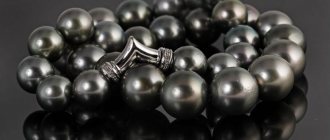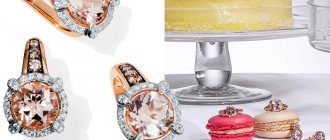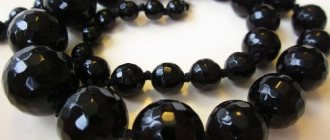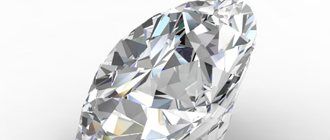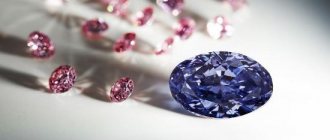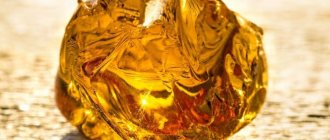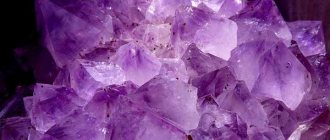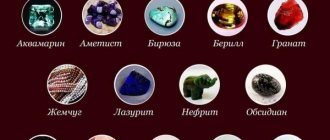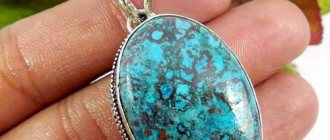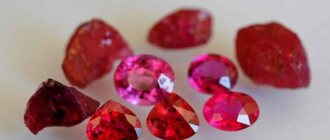Properties of stones
Usually the word “stone” refers to naturally formed pieces and fragments of rocks. They can be either homogeneous in composition or consist of different groups of substances. There are also native stones, although they are quite rare.
Physical Features
Stones are tasteless and odorless solids. Most of them cannot be melted under high temperatures, but are only crushed into smaller parts. Their remaining physical properties, such as mass, size, transparency, density, structure and color, vary significantly among different species.
Stones in nature can be smooth and rough, dense and brittle, painted in almost all colors, from black and white to all shades of blue, cyan, red, pink, purple, green, sand, brown and others. There are also often options with stripes, patterns and iridescences, which give a very beautiful look even to not particularly valuable minerals.
Various forms of stones used in construction and other areas of life are divided into groups according to the following physical characteristics:
- Strength and wear resistance. There are rocks with high (granite), medium (marble) and low (tuff) parameters.
- Density. Rocks with an indicator of 2200/m³ are considered heavy, and less than this value are considered light.
- The ability to absorb water, which is due to the porosity of the mineral.
- Acid resistance. Some stones, such as marble, easily collapse under their influence, as they enter into a chemical reaction. The most stable rocks in terms of this parameter are granite and limestone.
From a chemical point of view
Rocks and minerals can have very different chemical compositions. Most often, they are based on metal oxides and salts, but other chemical compounds are also found, such as sulfides, carbonates, silicates, phosphates, borates, sulfates, halides, garnets and others. There are also stones made from native elements, such as diamond, which consists entirely of carbon C.
In addition to the chemical composition, the structure of the arrangement of atoms of a substance and the presence of impurities in it are also important. For example, emerald and ruby have the same chemical formula, Al₂O₃, but differ in appearance due to their different ability to absorb light.
Principles of Distinction
To understand the essence of the issue and the differences, you need to consider factors such as:
- The existence of minerals and rocks. This classification is basic in mineralogy. Its essence lies in the fact that minerals are substances that have a homogeneous structure, but rocks or simply stones are heterogeneous in composition.
- Minerals are used in jewelry, and stones are more often found in industries and construction.
- From an esoteric point of view, minerals have magical properties, but stones do not.
- The cost of stones sometimes differs thousands of times from the price of minerals. Minerals are always more expensive, there are fewer of them in nature, since there are always fewer pure substances than materials with impurities. They look more beautiful, but there are more benefits from ordinary stones or rocks. Rocks make it possible to extract heat and are used in many energy sectors.
- Natural origin. Minerals are products of nature that are found directly in the soil. Therefore, shellby, rhinestones and other stones made in a laboratory cannot be called minerals, but they can be called stones. Organic substances, for example, amber and jet, do not fit into the category.
Ideally, minerals are truly homogeneous; most often the crystal contains impurities, which are called defects or inclusions, and the price of the product drops because of this. If a mineral is called a stone, then it is better to choose the adjective “precious”, “semi-precious” or “ornamental”.
What is onyx
Onyx is classified as a variety of quartz with a fibrous structure. This is a popular mineral widely distributed on the planet. Its name comes from an ancient Greek word that means 'nail' or 'hoof'.
The stone is somewhat similar to marble. Where did this amazing stone with a beautiful design come from?
Nature of stone
Onyx not only looks like marble, but is also just as durable. At the same time, it is superior to marble and even granite in its resistance to low temperatures and moisture, as well as:
Mineral deposits
Onyx rock piece
Onyx is a common mineral. It is mined in many countries. The most valuable specimens are supplied to the market by Uruguay, Arabia, Brazil and India.
In Russia there are also deposits of striped gem. It is mined in Primorye, Chukotka and Kolyma.
Industrial mining of the mineral is carried out by Afghanistan, Pakistan, Turkey, Egypt, Mexico and Iran.
In Turkmenistan there are onyx caves - the Karlyuk and Kap-Kotan deposits, in which the walls and floor are entirely made of striped gems, and in the latter you can also see onyx stalagmites and stalactites.
Paving stones are ideal for creating road surfaces
Paving stones are one of many types of hard road surfaces. Often used in paving roads or sidewalks. Architects and designers use it in cladding and decorative works. With the help of a competent approach, you can perform many operations, such as:
- Pave the road, sidewalk.
- Decorate the house, cottage.
- Carry out facing work.
- Emphasize exterior elements on the site
A description of the type of stone, name and characteristics are on our website, so you can easily find the option you need.
Sidewalk paved with paving stones
How to distinguish an original from a fake
Black onyx cabochon
Onyxes, despite their availability, are still counterfeited. You can identify the unnaturalness of a stone like this:
- Check his weight. It should be quite heavy compared to common counterfeit materials - glass and plastic.
- Estimate thermal conductivity. Natural stone absorbs the heat of the human hand very slowly and reluctantly.
- Check hardness. A true striped gem cannot be scratched by a needle or a blade.
- Assess brightness. If the color of the stone is too bright, then one can suspect that its coloring is artificial, since the color of natural onyx is always soft and muted.
- Compare prices. Amazing cheapness (especially of black onyxes, they are most often counterfeited) is a sign of deception on the part of the seller.
Origin
- The world of stones is sometimes like the world of bureaucrats. If you are looking for onyx, you are referred to agate, from there to chalcedony, from there to silicas. And the end point is quartz.
- Onyx is formed as a result of carbonate deposits in the presence of thermal mineral waters.
- Aragonite marble onyx is formed from hot mineral springs in volcanic areas in the form of mantles, veins and sinter formations.
- In karst cavities among limestones, calcite onyx forms stalactites and stalagmites.
Onyx products and jewelry
Onyx frog
Onyx is considered an ornamental stone; craftsmen make a lot of amazing items from it - vases, boxes, souvenirs, inkwells, dishes, and so on, which anyone can purchase, for example:
- Bunny figurine – for 10 dollars.
- Figured vintage vase 19 cm high - for $70.
- Set of 6 glasses – for 26.5 dollars.
- A vintage lamp with a shade costs $600, and a simple table lamp costs just $60.
- Luxurious 35 cm high mirror made of onyx and brass - for $133.
- German mantel clock made at the end of the 20th century - for $55.
- A round box with a height of 7 and a diameter of 14 cm - for $55.
- Magic ball made of marble onyx on a stand - for $45.
For its flexibility in processing and interesting colors, the striped gem is also loved by jewelers. The cost of jewelry with onyx is largely determined by the material of the frame and the complexity of execution:
- Gold rings and rings can be purchased for $78-$265, silver rings for $25-$135.
- Silver earrings cost $25, and gold earrings cost $160-$580.
- Gold pendants - for 85-165 dollars.
- Bracelets cost $7-$125, and beads cost $10-$150.
How to care for stone
Caring for onyx is simple:
- It must be protected from exposure to bright light, especially sunlight, as it may turn pale. Therefore, in summer it is better not to wear jewelry with stones openly (only under clothes).
- It is advisable to store striped gems in a spacious box, and to prevent them from scratching other stones, they should be wrapped in soft cloth.
- Clean the stones as they become dirty, for which you can use a medium-hard brush, soda and running water.
Energy cleansing involves regularly rinsing the stone with cold water, and charging involves placing it under the moonlight.
Flagstone is an indispensable material for construction and cladding
Flagstone is a stone that is a thin slab.
Example of wall cladding with flagstone
Various forms make it indispensable in decorative works. With it you can ideally:
- Decorate the walls.
- Cladding the building.
- Improve the fireplace or fountain.
- Pave a path or sidewalk.
Our website presents various stones, types and names with photos. This information will help you easily find and select the right colors and shapes, thanks to which you can create a unique exterior in your garden.
Tangle of diseases
And as numerous studies show, proper nutrition can help with this. The role of heredity in the development of this disease is 25%. And, therefore, nutrition and lifestyle can play a big role in its prevention. In addition, such a diet will help protect against many other diseases. After all, such gallstones are tied into one “tangle” with other metabolic diseases - metabolic syndrome, obesity, diabetes, dyslipidemia (increased cholesterol and blood lipids).
Classification of gems
The group of semi-precious stones includes rare minerals that differ in color, pattern, variety of lines, color scheme, and are of jewelry value.
According to the law, precious stones include diamonds, emeralds, rubies, sapphires, and pearls. Currently, ornamental minerals are classified based on the degree of value, distinguishing the following types:
- precious (jewelry stones);
- jewelry and ornaments;
- ornamental.
Often, colored minerals can be included in the list of jewelry and semi-precious stones depending on the brightness of color, transparency, texture, and the presence of defects.
Questions/Answers
Ask - we will look for answers.
How to distinguish a fake?
- They began to imitate (fake) onyx a very long time ago. Tinted glass was used for this.
- They do the same now. In the worst case, this is glass; better fakes are made from tinted agate. High-quality imitations are made from polymer materials.
- We check the gem for thermal conductivity. Natural stone is cold, plastic heats up quickly.
- The color of natural onyx is delicate; fakes suffer from excessive color saturation.
Please note: if after several cleanings the decoration has faded or the design has become less expressive, there is reason to be sad.
Not onyx in decoration, but a vulgar fake. How to care?
Keep the jewelry in a separate case (onyx is easy to scratch).
Wash the contaminated stone with a weak soap solution with a napkin or soft brush. The soap is washed off with clean water and wiped thoroughly with a napkin.
The jeweler will help restore the stone to its former shine using special products.
Who should wear it?
- To old people. The stone will help you be more energetic, get sick less, and enjoy life more.
- For those whose profession is associated with danger (especially firefighters).
- Lawyers, politicians, lecturers - those who must convince the audience.
How to wear?
- In a ring, onyx awakens one from laziness, in earrings it makes a person enterprising and cheerful.
- Actively works in beads, hryvnias, pendants.
- The magical properties are enhanced if the jewelry is set in silver.
Note: it is better to wear an onyx ring on the middle finger.
What is the price?
The more varied and thinner the stripes on a gem, the more valuable it is.
Let's visit the Crafts Fair.
- A cute set of three tea tables. The base and legs are brass casting, the tabletops are made of marble onyx. And the price for all the beauty is small, only 46,000 rubles.
- Beads for handmade. The size, cut and color are varied. Price from 2 to 130 rubles per bead.
- An onyx pendant framed in leather will appeal to representatives of youth subcultures.
- Silver rings for men, with onyxes. Price from 26,000 to 56,000 rubles.
- A variety of druzy cabochons made of onyx.
- Cute elephants for good luck, from 2660 to 3170 rubles.
- Candlesticks, boxes, balls... It’s interesting to just wander through the pages and admire the work of the masters.
What colors are there?
The most diverse.
- White with yellow or pink layers.
- Brown, and the stripes are white, light, yellowish, brownish.
- Orange, red-brown with yellow, honey stripes.
- Dark red with pink, brown, yellowish stripes.
There are countless options.
Where can I buy?
Jewelry salons, large online platforms, shops. Stone exhibitions and fairs.
What stones does it go with?
Makes friends with agate and carnelian.
“Won’t get along well” with chrysoprase, aventurine, hyacinth.
What is Cameo Gonzaga?
The Hermitage houses a unique gem on a sardonyx - “Cameo Gonzaga” Size 15.7x11.8 cm, the cameo depicts the Egyptian king Ptolemy II and his sister Arsinoe. This is an amazing portrait gem. It was the property of the Dukes of Gonzaga in Mantua (Italy). Before she ended up in France, she passed through many owners. As a result, the cameo was purchased for 1.5 million francs by Josephine Beauharnais, Napoleon's wife. In 1814, she presented it to the Russian Emperor Alexander I as a token of gratitude for the generosity shown to her after the victory over Napoleon.
Artist's opinion: the great Rubens said “I believe that among gems with paired portraits, this is the most beautiful in Europe.”
Whose nail is onyx?
There is a legend about one of Eros' pranks. This, if anyone has forgotten, is the god of love in ancient Greek mythology. Curly-haired winged baby with a bow and arrow. Whoever the arrow hits will fall in love.
So about the legend. Aphrodite loved bright manicures. For the goddess of love, this is probably forgivable. Cupid, a child unencumbered by education, shot arrows in all directions. And one day he shot so accurately that he cut off his entire manicure (nails) with the arrow. They fell to the ground and turned into onyx stone.
Something alarmed me about the goddess’s manicure. I turned to a historian for advice (one of the authors of the book “Myths of Ancient Greece. Gods”). As for nails: in the times of the ancient Greeks there was varnish (the one with which all sorts of vases were painted). There were thin files. There was hair dye. So the historian said: it’s unlikely, but such a legend could exist.
And the book is interesting. In general, I like this duet of authors - V. Ivanov and O. Kolobova. Their books are wonderful, a huge amount of information is presented so easily, with such humor that you don’t notice that the book has already been read.
Where can you see cameos?
Unique collections of antique gems include:
- Vienna Kunsthistorisches Museum.
- Paris Cabinet of Medals.
- Berlin State Museums.
- Hermitage in St. Petersburg. The collection of this museum includes about 20 thousand cameos and intaglios.
Who is it suitable for?
- Suitable for people of any creative professions.
- The gem does not like narrow-minded and complex people, and sometimes refuses to work with them.
- Students during the busy period of the session.
- Businessmen at negotiations.
Zodiac signs
- Needed by Geminis of the first decade.
- Sardonyx is indicated for Aquarius, Sagittarius, Gemini.
- Contraindicated for Virgos and Cancers.
Every Earth sign can count on the help and support of onyx.
Taurus, Scorpio, and Capricorn will easily establish contact with onyx.
Is Onyx right for you?
Not really
Element
Earth
Planets
Venus
Pluto
Uranus
Mars
Mercury
Energy
Jan

